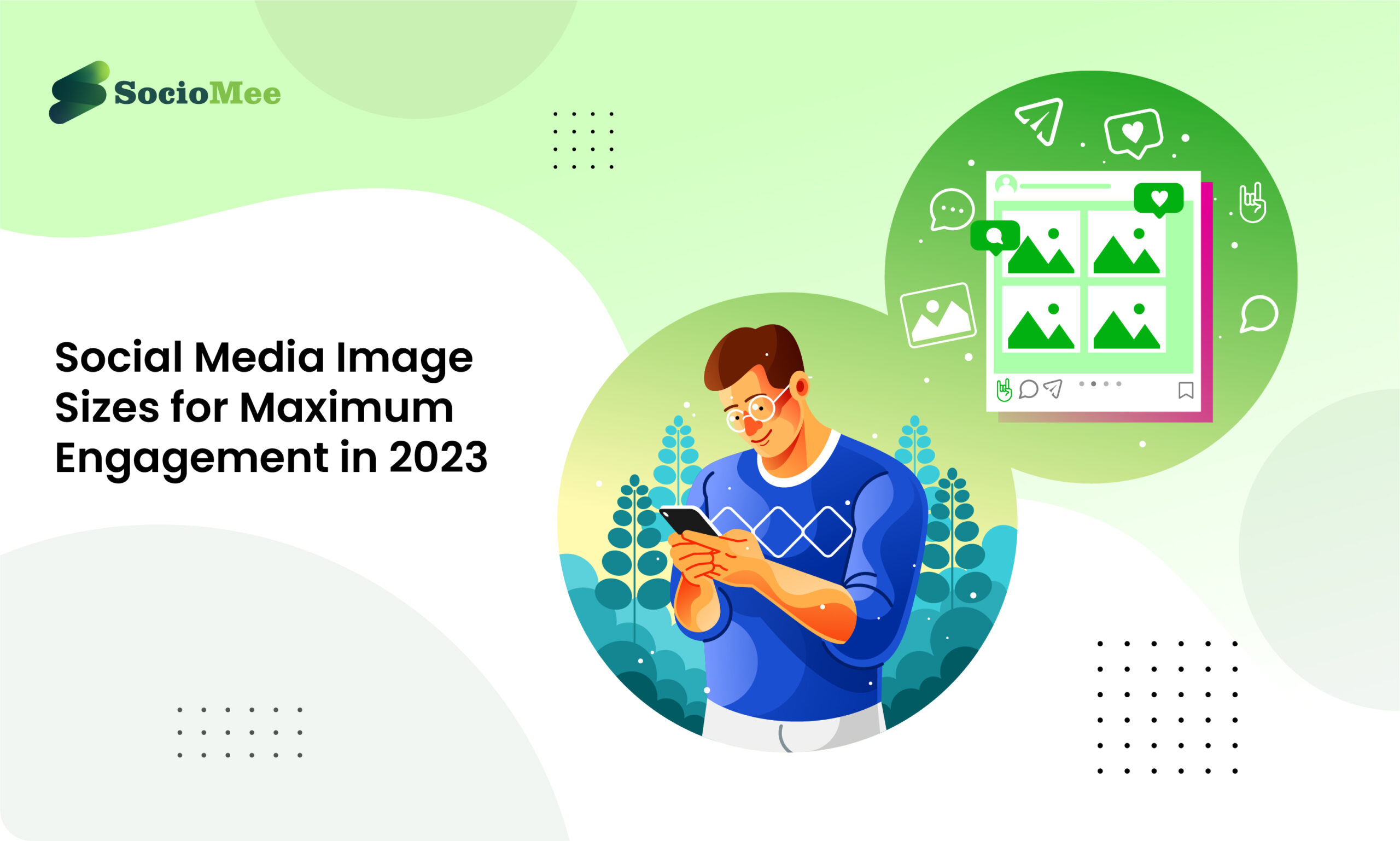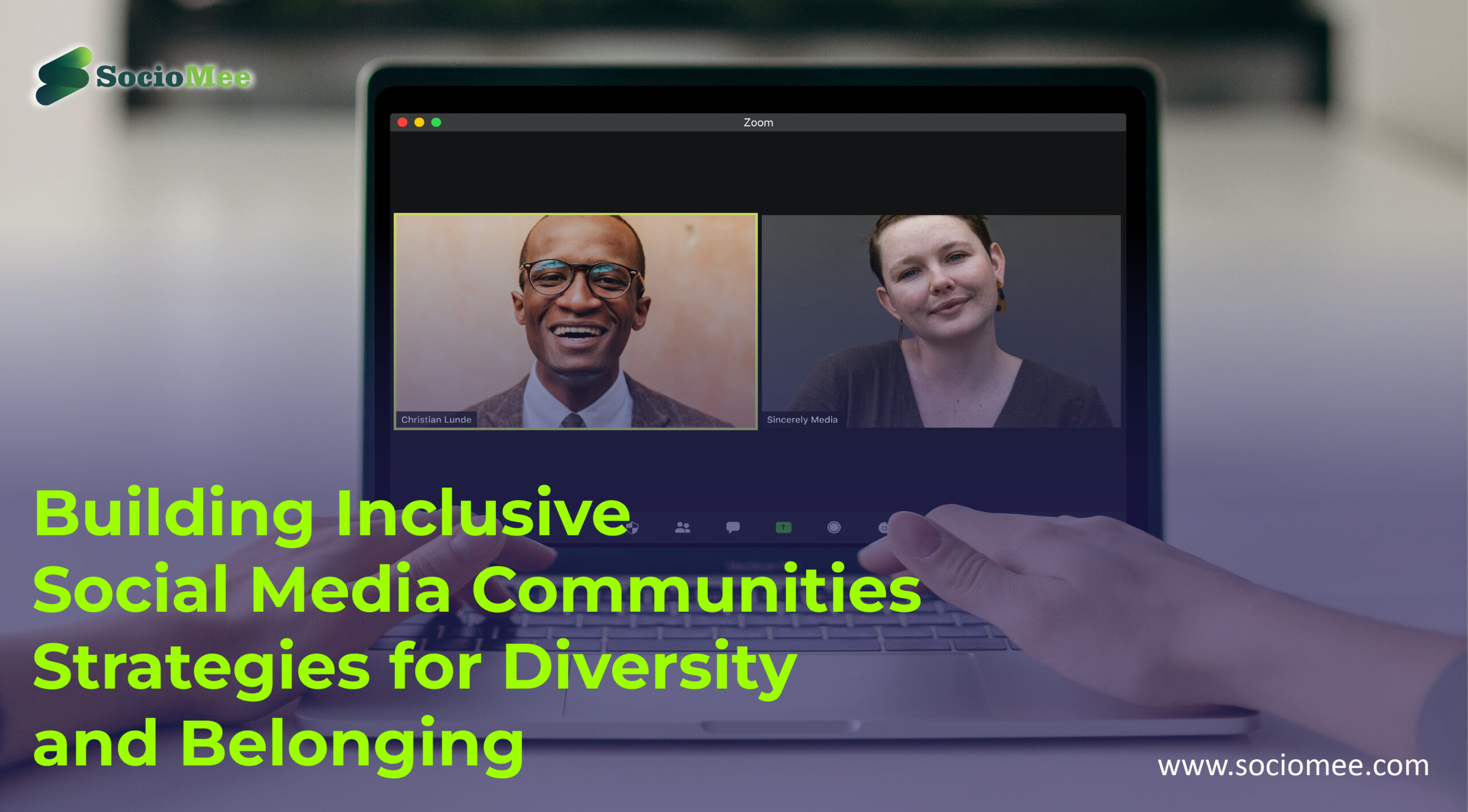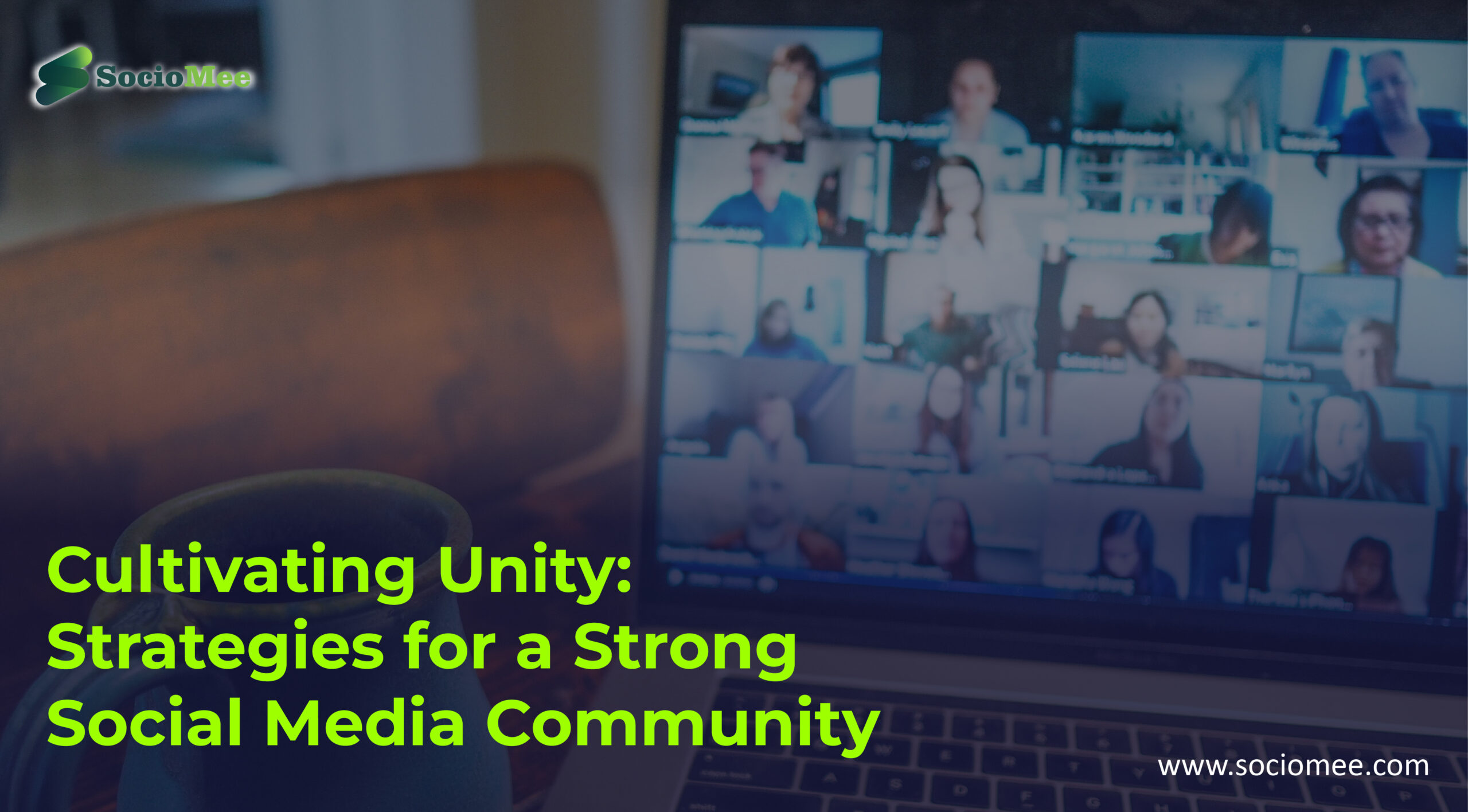As social media platforms continue to evolve, it is essential to stay on top of the latest trends and best practices when it comes to creating content. In 2023, the right image sizes to use on social media are key to creating maximum engagement with your followers. This article provides a comprehensive guide on how to level up your social media image sizes to ensure maximum engagement in 2023.
This article will also give you the articulate knowledge and resources you need to get the most out of your social media efforts, from comprehending the many picture kinds on each network to knowing how to optimise your images for each platform.
#1. Understanding the Need for Up-to-date Image Sizes
Having an up-to-date image library is crucial for any website or digital project. Image sizes and formats can drastically change over time as different devices, browsers, and platforms become more popular. Having an outdated image library can lead to distorted images, slow loading times, and other issues that can negatively impact the user experience.Understanding the need for up-to-date image sizes is the first step in ensuring that your digital projects are optimized for different viewing devices. By understanding the different image sizes and formats, you can ensure that each image will look the same across all viewing devices.
- When building a current image library, the aspect ratio is among the most crucial factors to take into account. The proportion of an image’s width to its height is shown here. If your photographs are not optimised for the various aspect ratios used by different devices and browsers, they may appear distorted or pixelated.
- In addition to aspect ratio, it is also important to consider file size. Images with large file sizes can take longer to load and can slow down the user experience. To avoid this issue, you should look for images that are optimized for the web and are compressed to reduce their file size.
- Finally, understanding the different image formats is also important. Different formats, such as JPEG, PNG, and GIF, are optimized for different uses and image types. Knowing which format is best for your project can help you create an image library that is optimized for different viewing devices.
By understanding the need for up-to-date image sizes, you can ensure that your digital projects look great on all devices. Taking the time to properly optimize your images will also help improve the user experience, ensuring that your website or digital project is successful.
#2. How to Choose the Best Image Size for Each Social Platform
Choosing the right image size for your social media posts can be a daunting task, especially when there are so many platforms to consider. Each platform has different image size requirements and guidelines, so it’s important to take the time to determine the best size for your needs. Here are some tips to help you choose the best image size for your social media posts.
- Understand the Platforms: Before you start creating or resizing your images, it’s important to understand the different requirements for each platform. Different platforms have different image size guidelines; for example, Twitter recommends a 2:1 aspect ratio for images, while Instagram suggests a 1:1 aspect ratio. Knowing the different requirements for each platform will help you make sure your images are the right size.
- Resize for Each Platform: Once you’ve determined the image size guidelines for each platform, you’ll need to resize your images accordingly. Resizing can be done manually or with the help of a tool such as Adobe Photoshop. It’s important to ensure that the aspect ratio and dimensions are correct for each platform.
- Consider Quality: It’s also important to consider the quality of the image when selecting the size. While smaller images may be easier to upload and share, they may not be as clear or as eye-catching as larger images. It’s important to select an image size that will still maintain the quality of the image.
- Test Different Sizes: Once you’ve selected an image size for each platform, it’s a good idea to test it out to see how it looks on various devices. This will help you determine if the image is the right size and if it’s going to look the best on the platform.
By following these tips, you’ll be able to select the best image size for your social media posts. Taking the time to resize your images correctly will ensure that your posts look great and are optimized for each platform.
Connect with new world
#3. Tips for Resizing or Cropping Images for Maximum Engagement
Resizing or cropping images can be an effective way to get maximum engagement from your audience. Here are some tips to help you resize and crop your images for the best results:
- Start with the right size: It’s important to start with the correct size for your image. This will ensure that you get the most out of your image when it’s cropped or resized. Different social media platforms have different optimum sizes, so make sure you’re aware of them before you start.
- Consider your target audience: Depending on who you’re targeting, you may want to crop or resize your image differently. For example, if you’re targeting an older demographic, you may want to use larger images, whereas if you’re targeting a younger demographic, you may want to use smaller images.
- Use the right tools: There are a variety of tools available for resizing and cropping images. Choose the one that best suits your needs and make sure it has the features you need to get the job done.
- Test before you publish: Before you publish your image, make sure to test it out on different devices and browsers to make sure it looks good. This will help ensure you get the maximum engagement from your audience.
By following these tips, you can ensure that your images are resized or cropped for maximum engagement.
#4. Utilizing Automation Tools to Manage Social Media Image Sizes
Social media image sizes can be a challenge to manage, but with the help of automation tools, it doesn’t have to be. Automation tools can help streamline the process of creating and managing social media images for each platform, ensuring your posts look their best every time.
- The right automation tools can help you quickly create images that meet the size requirements of each platform, saving you time and hassle. Automation tools can also help you keep track of your images, so you know exactly what size they need to be. This way, you can avoid having to resize images manually each time.
- Automation tools can also help you save time on social media management. Instead of having to manually post each image, you can set up automated posts and schedule them in advance. This way, all you have to do is create the images and let the automation tools do the rest.
- Finally, automation tools can help you ensure that all of your images are consistent across platforms. By using the same size for all of your images, you can ensure that your brand looks unified and professional, no matter where the image is posted.
Using automation tools to manage social media image sizes can be a huge time-saver, and it can help you ensure that your posts look their best. With the right tools, you can easily create and manage images that meet the size requirements of each platform, saving you time and effort in the long run.
#5. Benefits of Keeping Image Sizes Up-to-date
Keeping image sizes up-to-date is one of the best ways to ensure that your website is running optimally. Not only can it help to improve your website’s performance, but it can also help to reduce the amount of time and resources it takes to keep your website running. Here are some of the main benefits of keeping image sizes up-to-date:
- Improved Performance: When you keep your images up-to-date, you can help to ensure that your website runs faster and more efficiently. By reducing the size of your images, you can significantly reduce the amount of time it takes for your webpages to load. This can help to improve your overall website performance.
- Reduced Bandwidth: When you reduce the size of your images, it takes less bandwidth to deliver them to your users. This can help to reduce the cost of your hosting and help to ensure that your website runs smoothly.
- Improved User Experience: When you keep your images up-to-date, you can help to ensure that your users have a better experience when visiting your website. This is because they will see images that are crisp, clear, and up-to-date. This can help to create a better user experience and ensure that your visitors stay on your website longer.
By keeping your images up-to-date, you can help to ensure that your website is running optimally and that your visitors have a positive experience. This can help to improve your website performance and reduce the amount of time and resources it takes to keep your website running.
#6. Strategies for Updating Image Sizes on Multiple Social Platforms
It might be challenging to adjust image sizes across various social media networks. It entails making distinct images for each platform and making sure they are scaled and formatted appropriately. There are, however, a number of methods you can employ to simplify the procedure.
- Use a Template: Using a template is the easiest way to make sure that your images are correctly sized and formatted for each platform. There are a number of image templates available online that provide the exact dimensions for each platform. Simply choose the template that works for your needs and fill in the correct dimensions for each platform.
- Utilize Automation Tools: Automation tools can make the process of updating image sizes on multiple social platforms much easier. There are a number of tools available that can generate images in the correct sizes for each platform quickly and easily.
- Use a Single Image: If you don’t want to create separate images for each platform, you can use a single image and resize it for each platform. This can save you time and energy, as you only have to create one image. However, it can also lead to a loss of quality if the image is not correctly resized.
- Utilize a Design Tool: If you don’t have the time or resources to create separate images for each platform, you can use a design tool to help. There are a number of tools available that allow you to quickly and easily create images in the correct size and format for each platform.
By following these strategies, you can make the process of updating image sizes on multiple social platforms much easier. With the right tools and strategies, you can ensure that your images are correctly sized and formatted for each platform quickly and easily.
Connect with new social community
#7. Analyzing Engagement After Updating Image Sizes
Image size is an important factor in engaging an audience online. As content creators, it’s essential to analyze the impact of image size on engagement when making changes to the design of an image or website. Doing so allows content creators to understand how image size affects the number of likes, shares, and comments their content receives.
When it comes to analyzing engagement after updating image sizes, there are several key metrics to consider. These metrics can help content creators identify what works and what doesn’t when it comes to optimizing images for maximum engagement.
- First, look at the total number of likes and shares an image receives before and after changing its size. This can provide valuable insight into whether or not the change was successful at increasing engagement.
- Second, look at the number of comments an image receives before and after the change. This can help content creators understand if the change was successful in sparking conversation around the image.
- Third, analyze how long users spend viewing the image before and after the size change. Content creators can use this data to determine if the change was successful in keeping users engaged with the image.
- Finally, look at the number of clicks an image receives before and after the change. This metric can help content creators understand if the change was successful in driving traffic to their website or other content.
By analyzing the impact of image size on engagement, content creators can make informed decisions on how to optimize their images for maximum engagement. Doing so helps ensure that their content performs well and reaches the right audience.
Conclusion
In conclusion, keeping up with the ever-changing social media image sizes and trends is essential to ensure your visuals are optimised for the platforms and audiences you’re targeting in 2023.
Not only can this help increase engagement, but it can also help you stand out from your competition and create a stronger connection with your audience. Taking the time to research, adjust, and test your images can have a lasting impact on the success of your social media campaigns.









